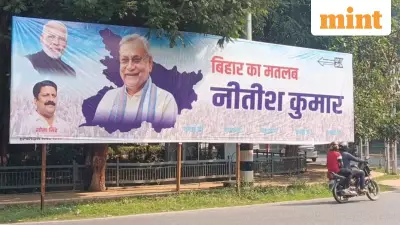
Maharashtra is gearing up for significant local body elections next month that will shape urban governance across the state. The electoral process will determine leadership for 246 municipal councils and 42 nagar panchayats, representing a crucial test for political parties ahead of larger state elections.
Election Schedule and Key Dates
The Maharashtra State Election Commission has announced a detailed timeline for the upcoming local body polls. The deadline for filing nominations concluded on November 17, with scrutiny of applications taking place on November 18. Candidates have until November 21 to withdraw their nominations, providing flexibility in the selection process.
The final list of contestants along with their allocated election symbols will be officially published on November 26. This gives political parties and independent candidates approximately one week for final campaign preparations before voters head to the polls.
Polling and Results Timeline
Voting for all 288 local bodies is scheduled for December 2, 2025, with electronic voting machines (EVMs) being used across all polling stations. The electoral exercise aims to fill 6,859 member positions and elect 288 presidents who will lead these urban local bodies.
The counting of votes will take place on December 3, just one day after polling concludes. This quick turnaround ensures that results are declared promptly, allowing for smooth transitions in local governance.
Representation and Reservation Details
The election features significant reservation provisions to ensure adequate representation for various communities. Of the 6,859 members to be elected, 3,492 seats are reserved for women, representing nearly 51% of the total positions.
Additional reservation includes 895 seats for Scheduled Castes, 338 for Scheduled Tribes, and 1,821 for Other Backward Classes. This distribution reflects the state's commitment to inclusive representation in local governance structures.
Major Political Parties in the Fray
Several prominent political organizations are contesting these local body elections, making the competition particularly intense. The key participants include:
- Bharatiya Janata Party (BJP)
- Maharashtra Navnirman Sena (MNS)
- Shiv Sena (UBT)
- Nationalist Congress Party (SP)
- Indian National Congress
- Vanchit Bahujan Aghadi (VBA)
- Rashtriya Samaj Party (RSP)
Administrative Preparations
The election machinery is fully mobilized to ensure smooth conduct of the polls. Approximately 66,775 personnel have been deployed for election duties across the state. This includes 288 returning officers and their assistants who will oversee the electoral process in their respective jurisdictions.
The Panchayati Raj system in Maharashtra operates as a three-tier structure for rural local governance, consisting of Gram Panchayats at village level, Panchayat Samitis at block level, and Zilla Parishads at district level. However, this election specifically focuses on urban local bodies.
Understanding Local Governance Structures
Municipal councils, known as nagar parishads, administer smaller urban areas and are responsible for local governance and urban development initiatives. These bodies play a crucial role in providing essential services and infrastructure in their jurisdictions.
Nagar panchayats represent areas in transition from rural to urban character, typically serving populations between 12,000 and 40,000 residents. These bodies help manage the unique challenges of rapidly urbanizing regions.
The outcome of these elections will significantly influence local development priorities and service delivery across Maharashtra's urban landscape. With political parties investing substantial resources in these contests, the results will also provide important indicators about shifting political allegiances ahead of larger electoral battles.





